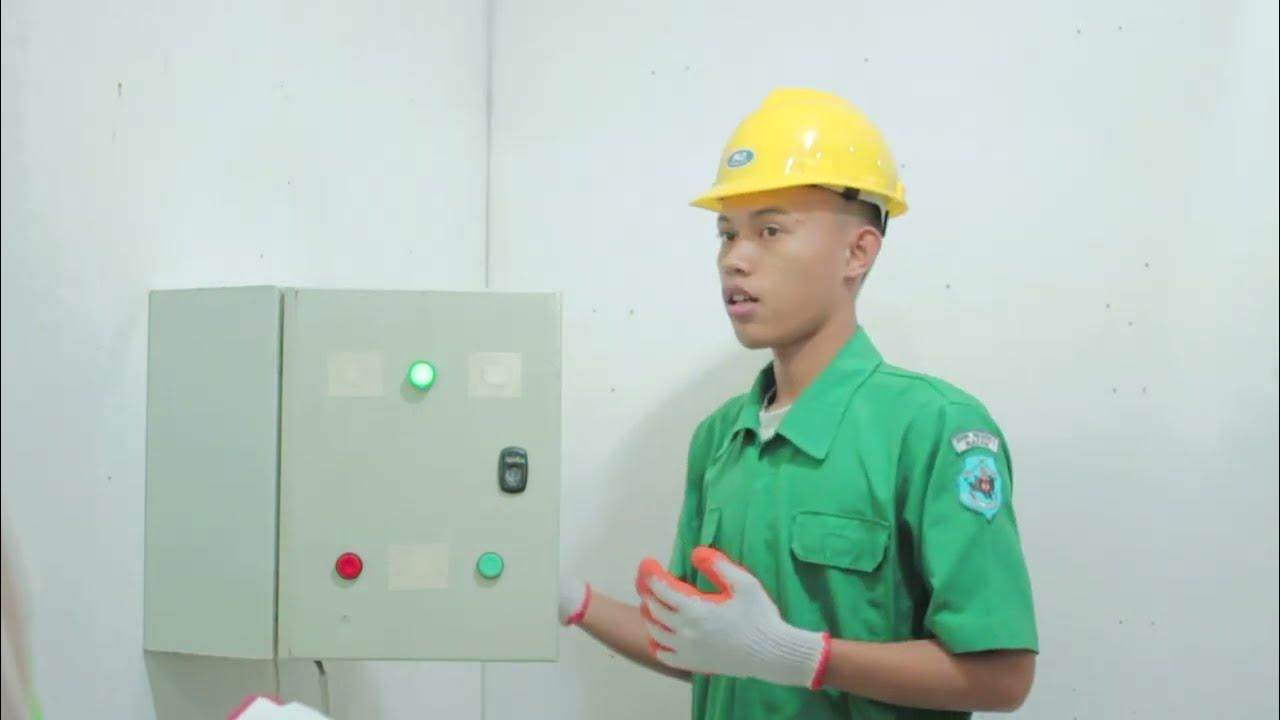Using a Line Reactor with a PowerFlex VFD
Summary
TLDRThis video explains the benefits of using a line reactor with a Variable Frequency Drive (VFD) system. Line reactors help reduce harmonics, limit current surges, and protect equipment from voltage spikes, improving overall performance and power quality. The video details the different types of line reactors, including open-style panel mounts and standalone enclosures, and the importance of selecting the correct impedance rating (3% or 5%) for optimal protection. It highlights the impact on extending VFD lifespan, preventing motor overheating, and ensuring compliance with power quality standards.
Takeaways
- 😀 Line reactors are inductors placed in series with a power line to reduce harmonics, limit current surges, and protect electrical equipment from voltage spikes.
- 😀 VFDs (Variable Frequency Drives) are used to control motor speed and save energy, but they can generate unwanted electrical noise and harmonics.
- 😀 A line reactor acts as a buffer, protecting both the VFD and the electrical system by reducing electrical harmonics, minimizing voltage spikes, and limiting current inrush.
- 😀 Using a line reactor with a VFD leads to better performance, improved power quality, and less wear on sensitive equipment.
- 😀 There are various sizes of line reactors available, such as open style panel mounts or standalone NEMA 1 enclosures, to fit different applications.
- 😀 The impedance rating of a line reactor is crucial for optimal protection and performance—3% impedance is typically sufficient for line spikes and motor current surges.
- 😀 5% impedance line reactors help reduce harmonic current, manage frequencies, and ensure compliance with standards like ITLE E519 or EN 61800.
- 😀 A line reactor helps extend the life of the VFD by reducing stress on its internal components.
- 😀 Using line reactors can prevent overheating and insulation breakdown in motor windings, improving overall system reliability.
- 😀 Installing a line reactor in a VFD system minimizes electrical disturbances and protects the VFD and motor from damaging power fluctuations and harmonics.
Q & A
What is the purpose of a line reactor in a power system?
-A line reactor is an inductor placed in series with a power line to reduce harmonics, limit current surges, and protect electrical equipment from voltage spikes.
How do line reactors benefit Variable Frequency Drives (VFDs)?
-Line reactors act as a buffer, protecting VFDs by reducing electrical harmonics, minimizing voltage spikes, and limiting current inrush, which results in better performance, improved power quality, and less wear on the equipment.
What issues can VFDs generate in power systems?
-VFDs can generate unwanted electrical noise and harmonics that can affect the power supply and cause damage to the system over time.
What are the benefits of installing a line reactor before a VFD?
-Installing a line reactor before a VFD helps reduce electrical harmonics, minimize voltage spikes, limit current inrush, and improve the overall performance of the system.
What types of line reactors are available in the Allen Bradley 1321 product line?
-The Allen Bradley 1321 product line offers open style panel mount reactors and standalone Nema 1 enclosure reactors, allowing users to choose based on their specific application and power quality issues.
What is the significance of selecting the appropriate impedance rating for a line reactor?
-Choosing the correct impedance rating is critical for ensuring optimal protection and performance of the system. A 3% impedance rating is suitable for line spikes and motor current surges, while a 5% rating provides additional benefits like reducing harmonic currents and helping comply with specific standards.
What are the differences between a 3% and a 5% impedance rating for line reactors?
-A 3% impedance rating is typically enough to handle line spikes and motor current surges, preventing nuisance tripping. A 5% impedance rating helps reduce harmonic currents and frequencies, and it also aids in meeting compliance standards like ITLE E519 or EN 61800.
How can a line reactor extend the life of a VFD?
-By reducing electrical disturbances and minimizing stress on the VFD’s internal components, a line reactor helps to extend the life of the VFD.
How do line reactors protect the motor?
-Line reactors can prevent overheating and insulation breakdown in the motor windings, which protects the motor from damage caused by power fluctuations and harmonics.
What is the main function of a line reactor in terms of power quality?
-The main function of a line reactor is to improve power quality by reducing harmonics, limiting voltage spikes, and preventing current surges, thereby enhancing the reliability and performance of the VFD and motor.
Outlines

Этот раздел доступен только подписчикам платных тарифов. Пожалуйста, перейдите на платный тариф для доступа.
Перейти на платный тарифMindmap

Этот раздел доступен только подписчикам платных тарифов. Пожалуйста, перейдите на платный тариф для доступа.
Перейти на платный тарифKeywords

Этот раздел доступен только подписчикам платных тарифов. Пожалуйста, перейдите на платный тариф для доступа.
Перейти на платный тарифHighlights

Этот раздел доступен только подписчикам платных тарифов. Пожалуйста, перейдите на платный тариф для доступа.
Перейти на платный тарифTranscripts

Этот раздел доступен только подписчикам платных тарифов. Пожалуйста, перейдите на платный тариф для доступа.
Перейти на платный тарифПосмотреть больше похожих видео

VFD Parameter settings - DELTA VFD - PLC Digital/Analog Output - In TAMIL - Part 03

LRS vs VFD| What is Liquid Resistance Starter| What is VFD| Function of VFD| Motor Starting Method

What Is A VFD? (Variable Frequency Drive) HVAC VFD BASICS

Video Pembelajaran Mengoperasikan Sistem Elektronik

Fluke MDA-500 Demonstration using DC Voltage

What is the Difference between VFD and Soft Starter?
5.0 / 5 (0 votes)
